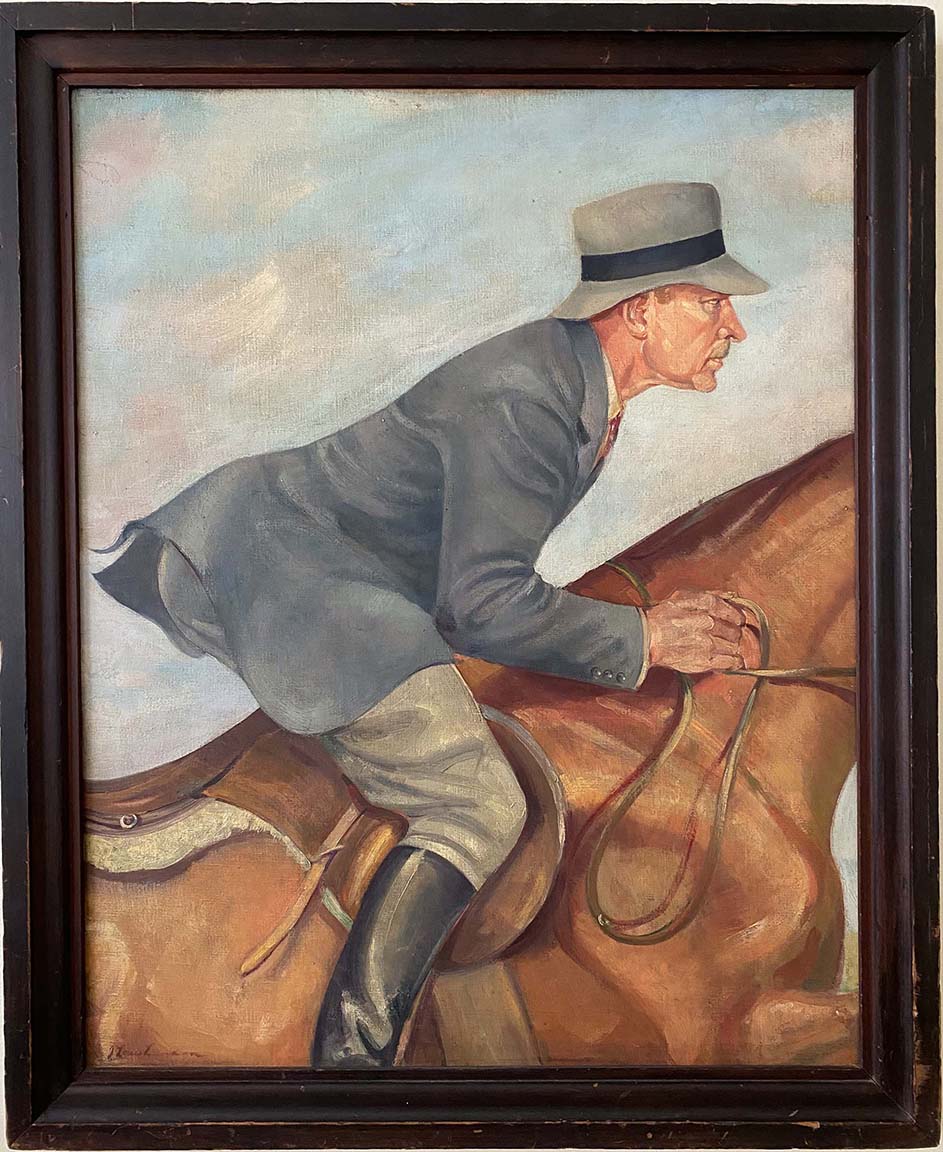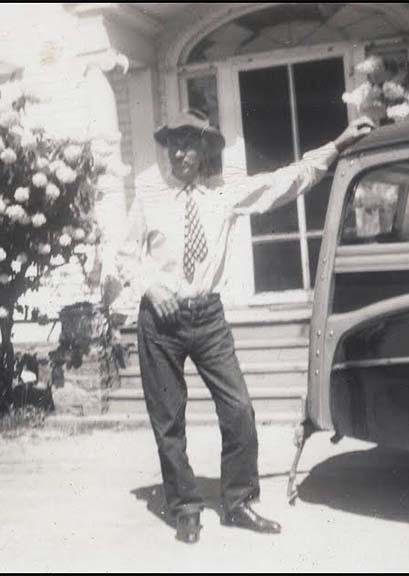

LOUIS LUNDEAN
"AFTERNOON RIDE"
SELF PORTRAIT
OIL ON CANVAS, SIGNED
AMERICAN, C.1935
34.5 X 27.5 INCHES


Louis Lundean 1894-1961 Louis Lundean was born in Council Bluffs, Iowa, and raised in Wyoming. He specialized in painting the American West, especially American Indians and horses. Also well known for his pictures of race horses and his portraits of Will Rogers and Robert E. Lee. By the time Louis attended high school, his skills as an artist were well established. After his discharge when World War I ended, he attended the University of Missouri. There he discovered a course called Introduction to Art and he enrolled. He left college early and moved to New York City, where he became a member of the Art Students League and studied with established artist George Luks. Lundean upheld an identity as an American cowboy. It was an excellent marketing tool when it came to promoting his drawings and paintings of horses and outdoor scenery. His work for magazines and publications allowed him to travel all across the country to horse polo and other sporting and hunting events. Most often, he would capture quick sketches of horses and their riders in action, but he also went back to his studio to complete larger, more finished paintings. Some years later a group of New York newspaper and magazine writers went to Pendleton, Oregon to publicisize the rodeo and take it East. At the station they were met with a flourish by young Lundean and a six-horse team with an old Concord coach. He had learned to handle the reins and swing the team as a young boy under old Pop Parsons, the last of the old coach drivers in the West. Walter Trumbull, a famous editor of his day was among the visitors. He became interested in the drawings and brilliant sketched with which Mr. Lundean illustrated the tour. He noted that as Mr. Lundean talked, he made quick drawings depicting the different types of saddles and horses used by the rodeo hands and sketches of the rodeo boys themselves. Louis Lundean took a carload of broomtails to the old Madison Square Garden as a means of getting to New York and the art school. As he was waiting to enroll in the school, a stocky man with breath redolent of whiskey eyed him up and own from sombrero to high heeled boots, and finally asked, “What are you doing here?’ Upon learning that Mr. Lundean wanted to be an artist he said, “What in the hell did you come here for?! You won’t learn anything here. I ought to know – I teach here. My name is George Lukas. Tell you what, you come and live with me and I’ll make an artist out of you, but you will have to work hard.” So one of the great artists of the day became constant guide, mentor, and friend. Boardman Robinson, ((1876-1952), a Canadian-American great artist, illustrator and cartoonist), also took a hand in his development. In the meantime, a living had to be made, and Louis Lundean got a job covering sporting events for the newspapers and magazines. He did lightning-like sketches of races, polo and ball games. With an urge to put his land of ours on canvas and paper, he spent six months on a Gloucester fishing boat and found the wild beauty of storm-tossed seas and the drama of ocean sunsets an inspiration. He went into the mines in Pennsylvania to portray the hard coal miner, a fearless, independent American who was proud of it. Fortune Magazine sent him out to cover county fairs and in so doing he found a new interest in barns. He has painted barns in Pennsylvania, Virginia, North and South Carolina, and throughout New England. After his marriage to Marjorie Daingerfield, a sculptress, daughter of the famous American artist, Elliott Daingerfield, the South became his summer home. Their studio, Westglow, is at Blowing Rock, N.C. Wherever he went the personality of the people of the region was reflected in the work of Mr. Lundean. In the West, Louis Lundean painted the outstanding cowhands of each state, also a famous Fransiscan Monk, Father Albert Braun; Captain Burton C. Mossman, the last of the Fighting Men of the West, the original Owen Wister’s “The Virginian”, as well as a large painting of Will Rogers made from sketches he did on the King Ranch in 1933.
|